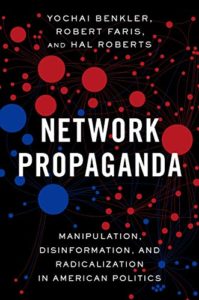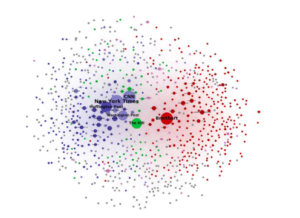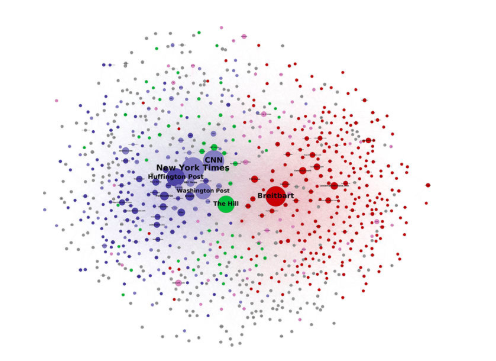A new book with rigorous analysis of how millions of stories were published, linked and shared over the last three years yields some surprising findings and valuable insights into dangerous trends that are posing risks to American democracy.
In Network Propaganda, Yochai Benkler, Robert Faris and Hal Roberts at Harvard’s Berkman Center used a variety of analysis tools to track the links and sharing of over 4 million pieces of content during and after the 2016 US presidential election. They find – to their surprise – that while social media serves as a vector for the spread of false and pernicious stories, and bad actors including state-sponsored Russian trolls and commercially motivated clickbait farms contributed to the fog of misinformation, it turns out that to date, these haven’t been the main agents contributing to the proliferation of of untruth.

Mainstream media with fact-based journalistic norms are still by far the most powerful voices; and are able to reach a substantial majority of the population. So important solutions to the spread of misinformation lie in the practices of mainstream journalism.
The custom of bringing voices from “both sides” should be deemphasized when one side of the discussion is further from verification, for example quoting vaccination opponents and climate deniers for “balance” Instead, reputable journalists should place greater emphasis on objectivity by showing verification.
The authors do find evidence of a “filter bubble”, but the phenomenon is asymmetrical, concentrated on the far right of the political spectrum, where people tend to rely exclusively on right-wing media and not on other media with stronger orientation toward facts. “The right side of the spectrum… has Breitbart and Fox News as its basin of attraction, has almost no overlap with the center, and is sharply separated from the rest of the map.” There are also conspiracy theories and other false stories that come from the left side of the spectrum, but the stories tend not to spread as far because misinformation gets fact-checked by other publications.

And the filter bubble on the right isn’t new, and it wasn’t created by Facebook or YouTube or Russian internet trolls. The book traces how the right wing filter bubble goes back decades, to the rise of televangelism, Rush Limbaugh, and right wing media ecosystem that prides itself in denouncing mainstream media, science and academia. This set of circumstances is distinctive to the US media ecosystem, not generalized in other parts of the world.
Benkler et al don’t discount the risks of social media sharing of disinformation, and have some policy recommendations to add to that important discussion and debate. But based on the analysis in the book, it’s not – yet – the main problem threatening democratic discourse in the US.
Because its conclusions rely on robust analysis of lots of data, I strongly recommend Network Propaganda to anyone concerned about the risks of today’s media environment to democratic discourse.
